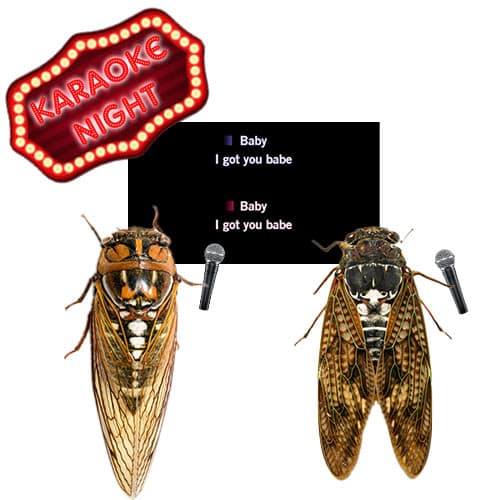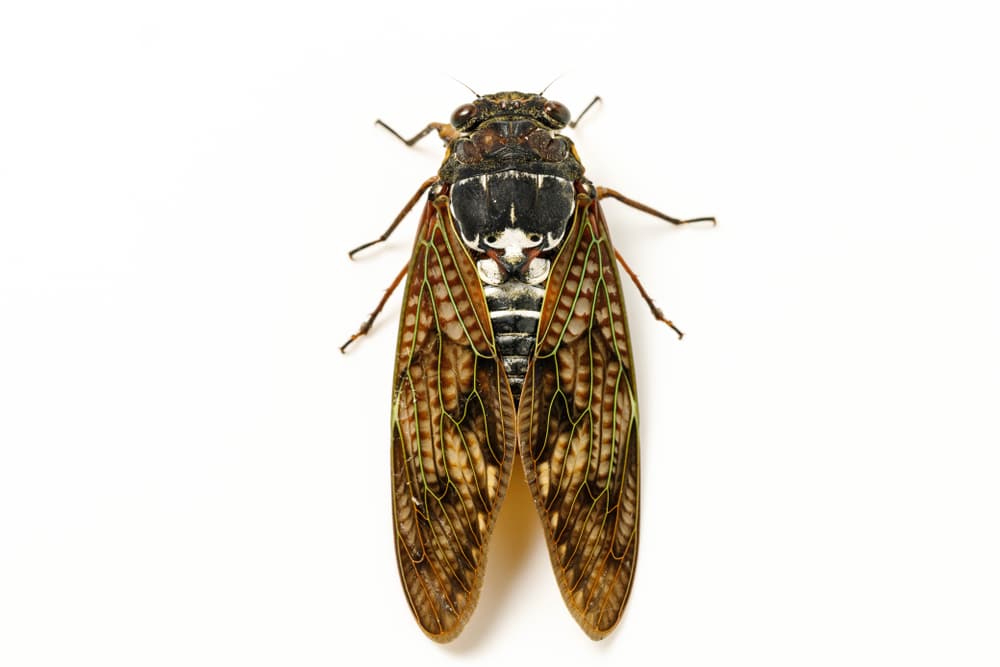When it comes to romance, you’d be hard pressed to find another creature, human or otherwise, that could compete with the cicada. Now, I know this sounds crazy and you are probably thinking this bug blogger has lost her marbles and is now one short of a dozen, but hear me out. Cicadas are truly the Frank Sinatras of the bug world. They have mastered love songs that even the best songwriters would envy and can belt them out like no other.
Before we continue on about their romantic skills, let me fill you in on some cicada fun facts.
First off, what the heck is a cicada? Well, there are two different types actually: annual and periodical. Both are big old nasty beefy looking insects that have long veiny transparent wings. Periodical cicadas are black with red eyes, red legs, and red wing veins (gross). Annual cicadas are usually larger in size and are dark green to black with green wing veins (equally gross). Cicadas measure between one and three inches long. Yes, you read that right – one and THREE inches long.
What the heck is the difference between the annual and periodical cicadas? Well, besides their appearance, the difference is the amount of time they spend as nymphs feeding below the ground. Annual cicadas spend about two to five years eating underground but make their way to the surface every year. Periodic cicadas eat and grow and then eat some more and grow some more, and keep on eating and growing for either 13 or 17 years, depending on the species. No, that was not a typo – 13 to 17 YEARS.
What the heck do they do once they emerge from all of their eating and growing? Well, they brush up on all of their most flirty and seductive moves and set out to find a lover to make a bunch of cicada babies with. This is where all of their romantic skills come into play. Bom chicka wow wow!
Male cicadas make beautiful music to attract their lady friends by using their drum-like abdomen to produce a loud buzzing sound that sounds like they are singing. When male cicadas get together with a bunch of their lovesick buddies, their songs can be heard up to a mile and a half away, and can reach volumes that exceed 100 decibels, which is louder than a motorcycle or power mower. They are serious about their mating calls and finding a baby mama for their future nymphs.
To respond to the male courting calls, females use wing flicks to show their interest. In the bug world, this is basically the same as swiping right on Tinder.
After they’ve hooked up and the deed is done, females cut into the bark of a tree to lay their eggs, which can be up to 600 eggs at one time. The eggs remain under the bark until the fall, at which time they hatch, drop to the ground, and the larvae burrow down into the soil and begin sucking the root juices. This is where they will remain for many years to come, depending on the cicada species. Even though cicadas are harmless to animals and humans, this is when they are most destructive to trees and shrubs.
How To Get Rid of Cicadas?
What in the heck can be done to get rid of these loud lovers? Well, have no fear, HowToPest.com is here and we’ve got two cicada products that just might be exactly what you are looking for: Bifen IT Insecticide Concentrate and Talstar P Professional Insecticide. Don’t let the love songs of the cicada interrupt your own romantic endeavors. Let HowToPest.com help you quiet their nose so you can make your own. (wink, wink!)







